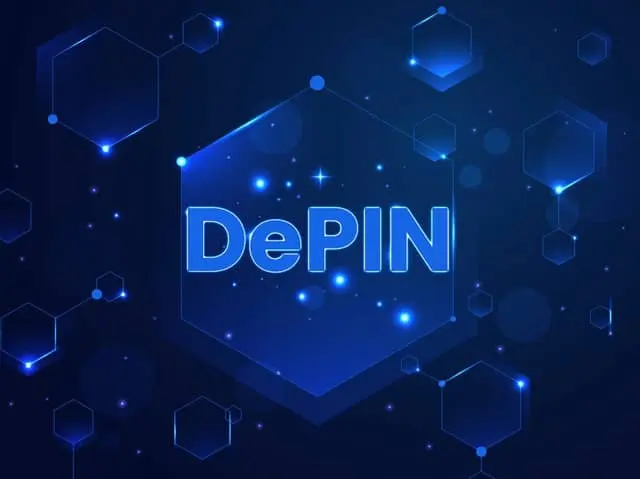What is the DePIN explained? In the fast-evolving world of Web3, this term has emerged as one of the most transformative innovations bridging digital ecosystems with real-world infrastructure. DePIN, short for Decentralized Physical Infrastructure Networks, represents a movement to disrupt traditional centralized systems by allowing communities, rather than corporations, to build, own, and govern physical networks.
From wireless networks to energy grids and data storage systems, DePIN is not just another blockchain buzzword—it may be the foundation of a decentralized future. This investigative deep-dive explores what DePIN is, why it matters, and how it’s reshaping the relationship between blockchain and real-world infrastructure.
What is the DePIN Explained?
At its core, DePIN (Decentralized Physical Infrastructure Networks) is a model where blockchain technology is applied to physical infrastructure. Unlike traditional systems owned by corporations or governments, DePIN networks are owned and operated by individuals and communities. Participants are incentivized with crypto tokens to contribute resources such as hardware, bandwidth, storage, or energy.
Think of it as a new economic model for building the infrastructure we all rely on. Instead of paying telecom giants for network access or cloud providers for storage, communities collectively build and manage these networks, with rewards distributed fairly via blockchain-based tokenomics.
The Origins of DePIN
The concept of DePIN traces back to projects like Helium (wireless networks) and Filecoin (storage). These pioneers showed that decentralized systems could rival corporate giants in efficiency and scale.
Helium incentivized users to deploy hotspots that provided wireless coverage, rewarding them in tokens. Filecoin encouraged people to rent out unused storage space, creating a distributed alternative to cloud monopolies like Amazon Web Services.
As blockchain matured, DePIN evolved from niche experiments into a broader movement. Today, it spans multiple industries—telecommunications, energy, mobility, and even sensor networks.
Why DePIN Matters
1. Breaking Monopolies
Traditional infrastructure industries—telecom, energy, logistics—are controlled by a handful of corporations. DePIN redistributes this power, enabling individuals to profit from contributing to infrastructure networks.
2. Aligning Incentives
Unlike centralized companies, where profits go to shareholders, DePIN ensures that those who build and maintain the infrastructure also benefit. This creates a fairer, community-driven model.
3. Resilience and Efficiency
DePIN systems are decentralized by design. This makes them more resilient against outages, censorship, or monopolistic price manipulation. A distributed energy grid or wireless network, for instance, is harder to shut down.
Key Examples of DePIN in Action
Helium – The Decentralized Wireless Network
Helium is perhaps the most famous DePIN project. It enables individuals to deploy wireless hotspots that expand network coverage for Internet of Things (IoT) devices. Participants earn HNT tokens, incentivizing mass adoption.
👉 Learn more from Helium’s official website.
Filecoin – Storage on the Blockchain
By leveraging unused disk space, Filecoin creates a decentralized cloud storage network that competes with big tech cloud providers. It rewards users for storing and retrieving data.
👉 More details on Filecoin’s documentation.
Render Network – Distributed GPU Power
Render Network focuses on decentralized GPU rendering power, supporting industries like gaming, 3D modeling, and AI training. It allows creators to access global computing resources more affordably.
The Economics of DePIN
A central component of DePIN is tokenomics. Tokens serve three key purposes:
- Incentives – Encourage individuals to contribute infrastructure.
- Payments – Users of the infrastructure (e.g., storage buyers) pay in tokens.
- Governance – Token holders influence the network’s future.
This model transforms physical infrastructure into an investable digital asset class. Early adopters who contribute to building networks benefit financially, while users gain access to cheaper, more reliable services.
Challenges Facing DePIN
Despite its promise, DePIN faces hurdles:
- Scalability: Can these networks scale to rival corporate giants?
- Regulation: Governments may resist decentralized infrastructure that challenges established industries.
- Sustainability: Token rewards must remain attractive without creating unsustainable economic models.
- Adoption Curve: For mass usage, DePIN must become as user-friendly as centralized alternatives.
DePIN vs. Traditional Infrastructure
| Aspect | Traditional Infrastructure | DePIN Model |
|---|---|---|
| Ownership | Corporations/Governments | Communities/Individuals |
| Profit Distribution | Shareholders | Contributors/Participants |
| Resilience | Vulnerable to central failures | Distributed and resilient |
| Incentives | Consumer fees | Token rewards and network benefits |
Future of DePIN: A Forward-Looking Analysis
The next decade may witness DePIN networks expanding into:
- Energy: Decentralized solar and battery-sharing networks.
- Mobility: Peer-to-peer EV charging stations.
- Sensor Networks: Community-driven environmental monitoring.
- AI and Computing: Decentralized AI training using distributed GPU power.
If successful, DePIN could redefine the global infrastructure economy much like Bitcoin redefined money. However, achieving this vision requires overcoming scalability and regulatory barriers.
FAQ: What is the DePIN Explained?
What is the DePIN explained in simple terms?
DePIN refers to Decentralized Physical Infrastructure Networks, where communities build and own infrastructure like wireless, storage, or energy grids, earning crypto rewards for participation.
How does DePIN differ from traditional infrastructure?
Unlike corporate-controlled infrastructure, DePIN is community-driven. Ownership and profits are distributed among contributors through blockchain tokenomics.
What industries can benefit from DePIN?
Telecommunications, cloud storage, energy, logistics, and AI computing are among the sectors most likely to be disrupted by DePIN.
What challenges does DePIN face?
Scalability, regulatory resistance, token sustainability, and user adoption remain the biggest hurdles for DePIN projects.
Is DePIN a good crypto investment opportunity?
DePIN tokens may offer opportunities for early adopters, but like all crypto investments, they come with high risks tied to adoption and market volatility.
Conclusion
So, what is the DePIN explained? It is more than just a blockchain trend; it’s a radical rethinking of how societies can build, own, and benefit from infrastructure. By leveraging community participation, tokenomics, and decentralization, DePIN could usher in a new era of resilient, fair, and efficient networks.
While challenges remain, the movement aligns with the broader Web3 ethos: returning power to individuals and communities. If successful, DePIN won’t just be another niche crypto concept—it could reshape the infrastructure economy of the 21st century.

